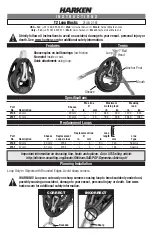
User’s Manual for Omega 12Patient Monitor
64
Do not use SpO2 sensors during magnetic resonance imaging (MRI). Induced current could
potentially cause burns. The sensor may affect the MRI image, and the MRI unit may affect
the accuracy of the oximetry measurements.
Prolonged continuous monitoring may increase the risk of undesirable changes in skin
characteristics, such as irritation, reddening, blistering or burns. Inspect the sensor site every
two hours and move the sensor if the skin quality changes. Change the application site every
four hours. For neonates, or patients with poor peripheral blood circulation or sensitive skin,
inspect the sensor site more frequently.
Setting alarm limits to extreme values may cause the alarm system to become ineffective. For
example, High oxygen levels may predispose a premature infant to retrolental fibroplasia. If
this is a consideration do NOT set the high alarm limit to 100%, which is equivalent to
switching the alarm off.
Each pulse oxygen probe and extension line used with the monitor are specially designed for
the monitor.
Before use, the responsible party or operator shall check the compatibility of the monitor with
the probe and extension cable, otherwise it may cause patient injury.
CAUTION
Use only the SpO2 sensors and other accessories specified in this manual. Follow this
manual’s instructions for use and adhere to all warnings and cautions.
9.3 SpO2 Measurement Influencing Factors
Many factors may cause inaccurate measurement:
Physiological characteristics that may interfere:
Cardiac arrest
Hypotension
Shock
Severe vasoconstriction
Severe anemia
Hypothermia
Venous pulsations
Darkly pigmented skin
Ventricular septal defects (VSDs)
Low perfusion
















































